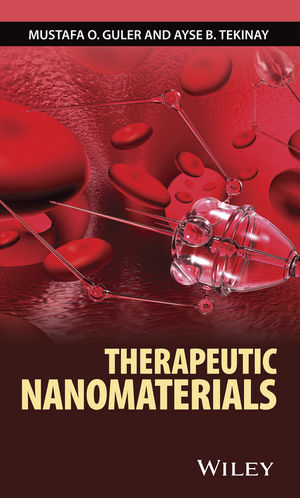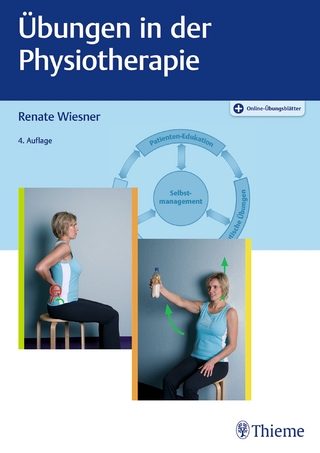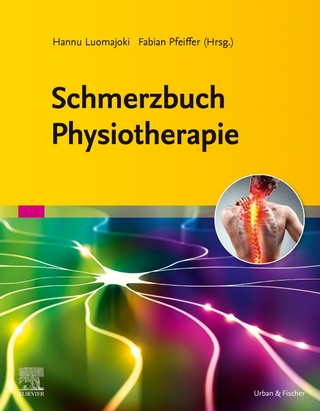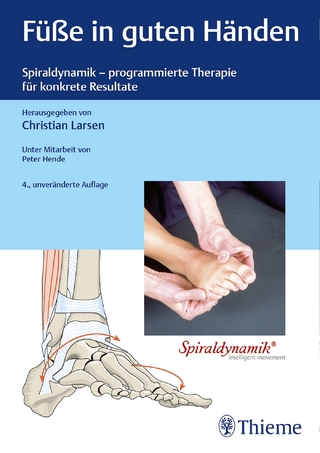
Therapeutic Nanomaterials
John Wiley & Sons Inc (Verlag)
978-1-118-98745-2 (ISBN)
• Addresses the increasing demand for nanomedicine in a cutting-edge, multidisciplinary field
• Introduces concepts, strategies, and requirements of developing materials
• Discusses hot topics in drug delivery, such as neural regeneration, cartilage regeneration, bone tissue regeneration, dental regeneration, biomedical imaging, tissue adhesives and biosensors
• Includes a chapter about nanotoxicology to help readers further understand the biocompatability of nanomaterials
Mustafa O. Guler, PhD, is an Associate Professor at the Institute of Materials Science and Nanotechnology, National Nanotechnology Research Center at Bilkent University (Ankara, Turkey). His research interests involve synthesis and characterization of novel materials for applications in chemistry, biology, and materials science. Ayse B. Tekinay, PhD, is an Associate Professor and Principal Investigator at the Institute of Materials Science and Nanotechnology, National Nanotechnology Research Center at Bilkent University (Ankara, Turkey) as well as a member of the adjunct faculty at the Rockefeller University (New York, U.S.A.). Her research focuses on molecular interactions of the cells and environment and the utilization of these interactions for regenerative medicine and drug delivery.
List of Contributors xi
Preface xiii
1 Nanomaterials for Medicine 1
Mustafa O. Guler and Ayse B. Tekinay
1.1 Introduction 1
1.2 Nanoscale Material Properties 2
1.3 Nanomaterials for Understanding Disease Pathways 2
1.4 Nanomaterials for Therapy 3
1.5 Challenges and Future Prospects 5
2 Nanosized Delivery Systems for Tissue Regeneration 7
Goksu Cinar, Didem Mumcuoglu, Ayse B. Tekinay, and Mustafa O. Guler
2.1 Introduction 7
2.2 Delivery of Protein Therapeutics with Nanocarriers for Tissue Regeneration 10
2.2.1 GFs and Cytokines 10
2.3 Gene and siRNA Delivery with Nanocarriers for Tissue Regeneration 13
2.3.1 Gene Delivery 13
2.3.2 siRNA Delivery 15
2.4 Systemic Targeting and Cellular Internalization Strategies for Tissue Regeneration 15
2.4.1 Targeted Delivery 15
2.4.2 Cellular Internalization Strategies 18
2.5 Future Perspectives 20
References 22
3 Nanomaterials for Neural Regeneration 33
Melike Sever, Busra Mammadov, Mevhibe Gecer, Mustafa O. Guler, and Ayse B. Tekinay
3.1 Introduction 33
3.1.1 Extracellular Matrix of Central Nervous System 33
3.1.2 ECM of Peripheral Nervous System 37
3.1.3 Urgent Need for Materials to Induce Regeneration in Nervous Tissue 39
3.2 Nanomaterials for Neural Regeneration 40
3.2.1 Physical Functionalization of Nanomaterials to Induce Neural Differentiation 40
3.2.2 Effects of Mechanical Stiffness on Cellular Behavior 40
3.2.3 Effects of Dimensionality on Cellular Behavior 42
3.2.4 Effects of Substrate Topography on Cell Behavior 43
3.2.5 Effects of Electrical Conductivity on Cell Behavior 44
3.3 Chemical and Biological Functionalization of Nanomaterials for Neural Differentiation 45
3.3.1 Effects of Biologically Active Molecules on Cell Behavior 45
3.3.2 Effects of Chemical Groups on Cellular Behavior 46
3.3.3 Effects of Biofunctionalization on Cellular Behavior Through ECM‐Derived Short Peptides 48
3.4 Conclusion 50
References 51
4 Therapeutic Nanomaterials for Cartilage Regeneration 59
Elif Arslan, Seher Ustun Yaylacı, Mustafa O. Guler, and Ayse B. Tekinay
4.1 Introduction 59
4.2 Current Treatment Methods for Cartilage Injuries 63
4.3 Tissue Engineering Efforts 66
4.3.1 Natural Polymers 67
4.3.2 Synthetic Polymers 69
4.3.3 Composite Materials 70
4.3.4 Physical Stimuli 71
4.4 Clinical Therapeutics for Cartilage Regeneration 72
4.5 Conclusions and Future Perspectives 73
References 78
5 Wound Healing Applications of Nanomaterials 87
Berna Senturk, Gozde Uzunalli, Rashad Mammadov, Mustafa O. Guler, and Ayse B. Tekinay
5.1 Introduction 87
5.1.1 The Structure of Healthy Mammalian Skin 88
5.1.2 The Mechanisms of Wound Healing 89
5.1.3 Repair Process in Chronic Wounds 94
5.2 Applications of Nanomaterials for the Enhancement of Wound Healing Process 95
5.2.1 Artificial Skin 96
5.2.2 Natural Nanomaterials for Wound Healing 97
5.2.3 Synthetic Nanomaterials for Wound Healing 100
5.2.4 Wound Dressings Containing Growth Factors 101
5.2.5 Biomimetic Materials 102
5.2.6 Current Challenges in the Design of Nanomaterials for Chronic Wound Management 103
5.3 Peptide Nanofiber Gels for Wound Healing 105
5.3.1 Relevance of Nanofibrous Structure of Peptide Gels for Wound Healing 106
5.3.2 Engineered PA Nanofiber Gels for Wound Healing and Insights into Various Designs 107
References 110
6 Nanomaterials for Bone Tissue Regeneration and Orthopedic Implants 119
Gulcihan Gulseren, Melis Goktas, Hakan Ceylan, Ayse B. Tekinay, and Mustafa O. Guler
6.1 Introduction 119
6.2 Bone Matrix 120
6.2.1 Organic Matrix and Bioactivity 120
6.3 Inorganic Matrix, Mineralization, and Bone Organization 122
6.3.1 Mechanical Properties and Structural Hierarchy of Bone Tissue 123
6.4 Regulation of Bone Matrix in Adult Tissue 125
6.4.1 Angiogenic Factors in Bone Remodeling 126
6.5 Strategies for Bone Tissue Regeneration 127
6.5.1 Hard Grafts for Bone Regeneration 127
6.6 Soft Grafts for Bone Regeneration 131
6.6.1 Peptide‐Based Bone Grafts 132
6.6.2 Polymer Nanocomposites as Bone Grafts 134
6.7 Future Perspectives 138
References 138
7 Nanomaterials for the Repair and Regeneration of Dental Tissues 153
Gulistan Tansık, Alper Devrim Ozkan, Mustafa O. Guler, and Ayse B. Tekinay
7.1 Introduction 153
7.2 Formation of Dental and Osseous Tissues 155
7.3 Dental Implants 156
7.3.1 Metallic Implants 158
7.3.2 Ceramic Implants 158
7.3.3 Polymeric Implants 159
7.4 Osseointegration of Dental Implants 159
7.5 Uses of Nanotechnology in the Development of Dental Implants 160
7.5.1 Enhancement of the Osseointegration Process 161
7.5.2 Pulp and Dentin Tissue Regeneration 162
7.5.3 Whole Tooth Regeneration 165
7.6 Conclusions and Future Perspectives 166
References 166
8 Nanomaterials as Tissue Adhesives 173
I. Ceren Yasa, Hakan Ceylan, Ayse B. Tekinay, and Mustafa O. Guler
8.1 Introduction 173
8.2 Tissue Adhesives Based on Synthetic Polymers 176
8.3 Naturally Derived Tissue Adhesives 180
8.4 Bioinspired Strategies 182
8.5 Nanoenabled Adhesives 186
8.6 Conclusion and Future Prospects 186
References 189
9 Advances in Nanoparticle‐Based Medical Diagnostic and Therapeutic Techniques 197
Melis Sardan, Alper Devrim Ozkan, Aygul Zengin, Ayse B. Tekinay, and Mustafa O. Guler
9.1 Introduction 197
9.2 NPs used in MRI 200
9.2.1 T1 CAs 201
9.2.2 T2 CAs 205
9.2.3 Dual Modal Contrast Agents 207
9.3 NPs used in Computed Tomography 208
9.3.1 Noble Metal‐Based NPs 209
9.3.2 Heavy Metal‐Based NPs 211
9.4 NPs used in Optical and Fluorescence Imaging 213
9.4.1 Quantum Dots 214
9.4.2 AuNPs 216
9.4.3 UCNPs 217
9.5 Theranostic Approaches and Multimodal Systems 218
9.6 Overlook and Future Directions 222
References 223
10 Biosensors for Early Disease Diagnosis 235
Ahmet E. Topal, Alper Devrim Ozkan, Aykutlu Dana, Ayse B. Tekinay, and Mustafa O. Guler
10.1 Introduction 235
10.2 Biosensor Elements 237
10.2.1 Recognition Elements 237
10.2.2 Output Type and Detection Techniques 239
10.2.3 Optical Biosensors 248
10.2.4 Electrical and Electrochemical Biosensors 250
10.2.5 Mechanical Biosensors 251
10.2.6 Other Biosensor Types 252
10.3 The Impact of Nanotechnology and Nanomaterials in Biosensor Design 253
10.4 Early Diagnosis and Biosensor‐Based Disease Detection 255
10.5 Conclusion and Future Directions 258
References 259
11 Safety of Nanomaterials 271
Nuray Gunduz, Elif Arslan, Mustafa O. Guler, and Ayse B. Tekinay
11.1 Introduction 271
11.2 Characterization, Design, and Synthesis of Nanomaterials 272
11.2.1 Chemical Identity and Physicochemical Properties 272
11.2.2 Biological Identity 275
11.3 Interactions at the Cell–Material Interface 277
11.3.1 Intracellular Activity 278
11.3.2 Cellular Uptake Mechanisms 283
11.4 Assays for Cell Viability/Proliferation 283
11.4.1 Assays for Oxidative Stress and Apoptosis Mechanisms 284
11.4.2 E valuation of Uptake and Accumulation of ENMs 284
11.4.3 Genotoxicity Assays 285
11.5 Animal Models and Long‐Term Risk Assessment 286
11.5.1 The Blood–Brain Barrier 286
11.6 Conclusions and Future Perspectives 290
References 291
Index 299
| Verlagsort | New York |
|---|---|
| Sprache | englisch |
| Maße | 158 x 236 mm |
| Gewicht | 612 g |
| Themenwelt | Medizin / Pharmazie ► Physiotherapie / Ergotherapie ► Orthopädie |
| Naturwissenschaften ► Chemie | |
| Technik ► Maschinenbau | |
| Technik ► Medizintechnik | |
| Technik ► Umwelttechnik / Biotechnologie | |
| ISBN-10 | 1-118-98745-4 / 1118987454 |
| ISBN-13 | 978-1-118-98745-2 / 9781118987452 |
| Zustand | Neuware |
| Haben Sie eine Frage zum Produkt? |
aus dem Bereich


